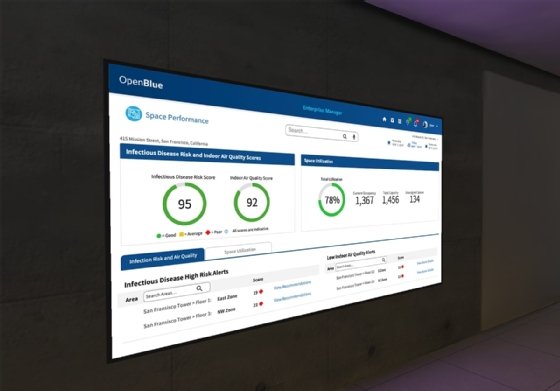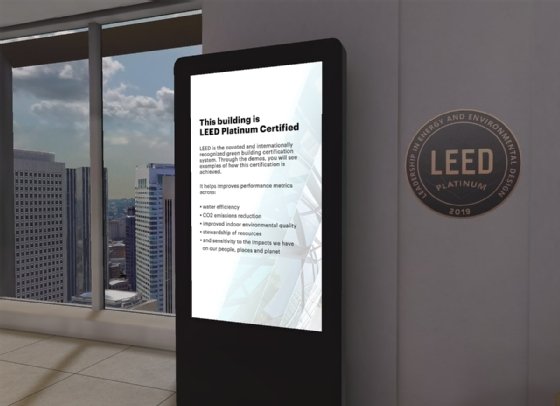
stnazkul - stock.adobe.com
Transforming buildings to be smart and sustainable
To meet greenhouse gas reduction targets and regulatory requirements, companies must transform facilities into energy-efficient smart buildings, and IoT platforms can help.
With a well-designed IoT platform, companies turn legacy buildings into smart buildings, allowing data from commercial, industrial, enterprise and individual devices to come together in the cloud.
The result is a network of interconnected devices that deliver data and provide insights to address critical business issues related to operational efficiency and sustainability.
Currently, buildings are responsible for 40% of global energy consumption and 33% of greenhouse gas emissions, according to the World Economic Forum. Companies must transform facilities into energy-efficient smart buildings to meet greenhouse gas reduction targets and regulatory requirements.
A smart building gathers operational data from a network of equipment and sensors. The building owner can continuously run analytics against the data to identify opportunities to improve building operations and the environment for occupants. This infrastructure helps owners and operators improve asset reliability and performance while also decreasing costs. The approach reduces energy use, optimizes how space is used and minimizes the environmental impact of buildings.
AI-driven decision-making
IoT devices inside a building can monitor and control parameters critical to occupancy health and sustainability, including air quality and resource usage metrics. AI-driven analytics can improve a facility manager's ability to monitor real-time performance and make well-informed decisions. For example, dashboards can capture the current utilization of an area, the oxygen vs. carbon dioxide saturation of the air, as well as infectious disease risks and other environmental information.

Digital twins are also being used to model, analyze and make decisions on maintenance, upgrades and sustainability. Digital twin technology replaces physical prototypes, thereby reducing resource use, carbon emissions, costs and time-to-market.
For example, tech service companies are now using these technologies to offer companies predictive analytics dashboards that show valuable data points and KPIs. Facility managers can view monthly consumption, break it down to hours and access a whole range of data points unique to a building and the people in it. A dashboard can show information from a utility company about demand spike. The dashboard can then adjust the day's forecast, and the building immediately begins precooling chilled water lines and selected areas. It also provides preheating of any electrical hot water systems.
These visualization and autonomous decision-making tools enable automatic adjustments depending on different parameters. With preventive maintenance sensors, managers can intervene before systems go down. Recording and tracking information also helps with scenario planning and future investment decisions. These technologies manage and optimize a portfolio of properties, with the ability to apply best practices broadly across multiple building types and any geography.
Regulatory requirements
Building performance dashboards are timely to stay ahead of regulatory changes to meet the Leadership in Energy and Environmental Design (LEED) and WELL building standards and improve environmental, social and governance (ESG) metrics.

LEED is the coveted and internationally recognized green building certification system. It helps improve performance metrics across water efficiency, CO2 emissions reduction, indoor environmental quality, stewardship of resources and sensitivity to buildings' impacts on people, places and the planet.
WELL is a building standard pursued by companies to demonstrate that their organizations and buildings deliver more healthy, thoughtful and human-focused spaces. Built on the latest scientific research, WELL advances and prioritizes the health and well-being of people who use the spaces. It aligns real estate, operations, human resources and the C-suite under a shared vision for health.
Many companies are focused on meeting these requirements and evaluating sustainable investments. For example, Schneider Electric, together with the World Economic Forum's Electricity Industry community of CEOs, created a new system value framework to more holistically evaluate the effect of policies and investments on the economy, society, the environment and the energy system. The framework aims to guide policy-makers, business leaders and the energy community's stakeholders to thoroughly evaluate the outcomes of their investments.
While a lot of progress is being made, the key to achieving the full impact of sustainability from IoT is focusing on integration and scale. Multiple layers of the technology stack need to share information in real time, including sensors, software platforms and end-user applications. Many building owners today aren't even capturing historical data or applying real-time analytics. This is a huge missed opportunity. By deploying IoT and advancements in AI and 5G, buildings can be reinvented to meet organizations' ESG goals, providing safer, healthier and more efficient spaces.
About the author
Vikrant Viniak is a managing director at Accenture, where he focuses on the high-tech industry. He is passionate about solving complex problems using creative thinking; bold and iconoclastic action; and data-driven analysis and decision-making. He helps clients with their most strategic imperatives, including digital transformation, driving growth through digital operating models, everything-as-a-service transformations and strategic partnerships.





